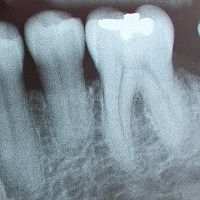Study Suggests Nanoparticles Could Prevent Tooth Decay
A study out of the University of Pennsylvania looked at whether nanoparticles could penetrate the dental biofilm surrounding bacteria.

Plaque, otherwise known as dental biofilm, is usually made up of an extracellular matrix that encapsulates bacteria in a protective barrier, making it difficult to remove the bacteria effectively. The bacteria in the biofilm can create highly acidic microenvironments, leading to the acid-dissolution of enamel on teeth. Now, a new method of targeting these bacteria could help to reduce the onset and severity of tooth decay.
It’s a novel approach to fighting decay. Researchers at Penn Dental Medicine decided to forgo applying an antimicrobial treatment in favor of using
. Unfortunately, current antimicrobial agents are not able to penetrate the dental biofilm itself, and therefore cannot kill the bacteria that are contained inside.
The new strategy to fight tooth decay is an extension of earlier findings, which showed that nanoparticles could possess enzyme-like properties that are dependent on surrounding pH levels. The earlier research showed that, at a neutral or near-neutral pH, nanoparticles had no catalytic activity at all. However, when the pH became acidic, the nanoparticles became very active and could quickly produce free radicals.
In the new
, researchers used the enzyme-like properties of pH-sensitive, iron-containing nanoparticles to jump-start the activity of hydrogen peroxide, itself a natural antiseptic. When hydrogen peroxide was activated by the nanoparticles, it produced free radicals. Scientists first studied the effects of the free radicals in in vitro applications and later moved on to animal studies.
The animal studies were performed using rats, an animal that can develop the same kind of tooth decay observed in humans when infected with the bacterium Streptococcus mutans. Nanoparticles and hydrogen peroxide were both applied to the rat’s teeth for one minute, twice daily. The experiment was performed over the course of three weeks.
Using the animal model, scientists were able to show that the free radicals produced by activated hydrogen peroxide broke down the dental biofilm and killed the bacteria contained inside it. This significantly reduced the amount of plaque present and prevented further tooth decay. There were also no adverse effects observed in the oral soft tissues of any of the rats.
The study’s senior author, Hyun (Michel) Koo, DDS, MS, PhD, said that “adding nanoparticles increased the efficiency of bacterial killing more than 5,000-fold”, according to the same study published in Biomaterials. Koo also said that “it’s very promising…the efficacy and toxicity need to be validated in clinical studies, but I think the potential is there.”
ACTIVA BioACTIVE Bulk Flow Marks Pulpdent’s First Major Product Release in 4 Years
December 12th 2024Next-generation bulk-fill dental restorative raises the standard of care for bulk-fill procedures by providing natural remineralization support, while also overcoming current bulk-fill limitations.